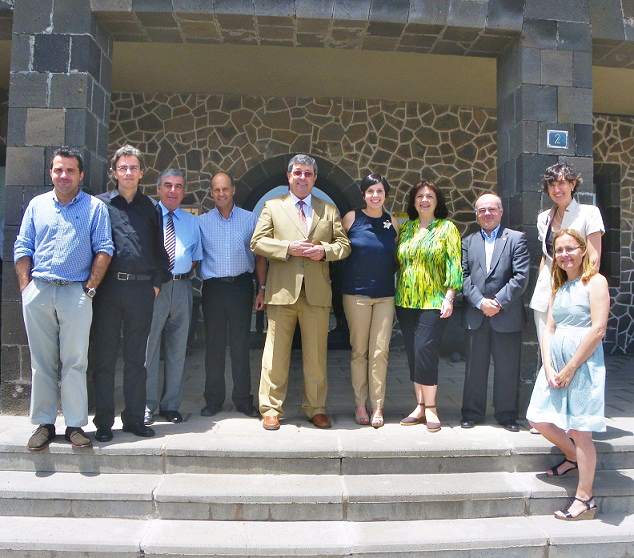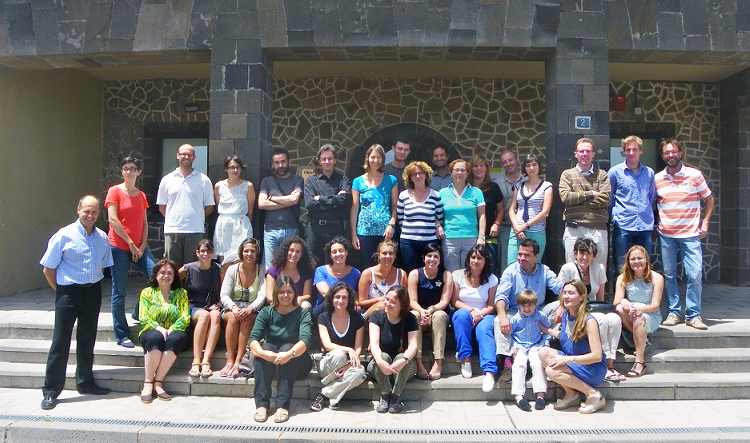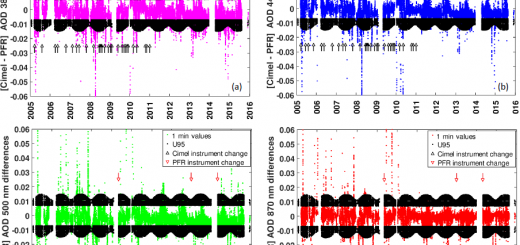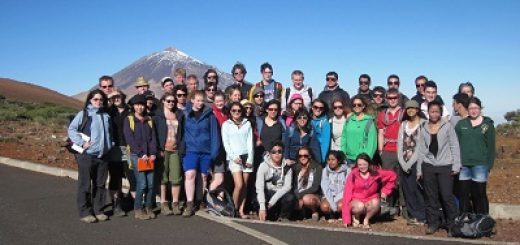PHD THESIS: SULPHUR DIOXIDE, ULTRAFINE PARTICLES, AIR QUALITY AND AIR POLLUTANTS FROM NORTH AMERICA
|
|
The 19 of July 2012, Yenny González Ramos defended her PhD Thesis entitled “Levels and origin of reactive gases and their relationship with aerosols in the proximity of emission sources and in the free troposphere at Tenerife” at the Izaña Atmospheric Research Center. Download the PhD Thesis manuscript.
|
Yenny Gonzalez-Ramos defended her PhD Thesis entitled ‘Levels and origin of reactive gases and their relationship with aerosols in the proximity of emission sources and in the free troposphere at Tenerife’ on July 19th, 2012 at the Izaña Atmospheric Research Center. This was a celebration in which researchers and professionals of atmospheric sciences, medicine and air quality management met. The Leader of Department of Development and Applications of AEMET, Dr. Yolanda Luna, was also present. The panel of expert examiners was composed by Prof. Venerando González (La Laguna University), Dr. Luis Galindo (La Laguna University), Dr. Inmaculada Menéndez (Las Palmas de Gran Canaria University), Dr. Jesús de la Rosa (Huelva University) and Dr. Teresa Moreno (CSIC, Barcelona). The supervisors of this PhD were Dr. Sergio Rodríguez (Izaña Atmospheric Research Centre) and Dr. Juan Carlos Guerra (La Laguna University).
Dr. Yenny González was honoured with the highest score (Apt “CUM LAUDE”), being proposed for special award.
Yenny González studied the origin of ultrafine particles and their relationship with reactive gases in areas close and distant to emissions sources of pollutants. For this purpose, data collected during four years (2007–2010) in the Izaña Observatory and the Santa Cruz Observatory were analysed.

Photo 1; From left to right: the PhD supervisors, Dr. Sergio Rodríguez (Izaña Atmospheric Research Centre, AEMET) and Dr. Juan Carlos Guerra (La Laguna University), and the members of the panel of expert examiners, Dr. Luis Galindo (La Laguna University), Prof. Venerando González (La Laguna University), Dr. Yenny González (Izaña Atmospheric Research Centre, AEMET), Dr. Jesús de la Rosa (Huelva University), Dr. Teresa Moreno (CSIC, Barcelona), and Dr. Inmaculada Menéndez (Las Palmas de Gran Canaria University).

Photo 2; From left to right: Dr. Sergio Rodríguez (Izaña Atmospheric Research Centre, AEMET), Dr. Juan Carlos Guerra (La Laguna University), Dr. Luis Galindo (La Laguna University), Dr. Emilio Cuevas (Izaña Atmospheric Research Centre, AEMET), Prof. Venerando González (La Laguna University), Dr. Yenny González (Izaña Atmospheric Research Centre, AEMET), Dr. Yolanda Luna (AEMET), Dr. Jesús de la Rosa (Huelva University), Dr. Teresa Moreno (CSIC, Barcelona), and Dr. Inmaculada Menéndez (Las Palmas de Gran Canaria University).

Photo 3; Dr. Yenny Gonzalez with colleagues and friends after the PhD Thesis defense at the Izaña Atmospheric Research Center on July 19th, 2012.
Ultrafine particles.
These particles have adverse effects on human health and influence on climate. It was believed that vehicle exhausts are the most important source of ultrafine particles. However, the research presented today has shown how industrial emissions of sulphur dioxide result in very high concentrations of ultrafine particles. In the study city (Santa Cruz de Tenerife), sulphur dioxide emissions are due to an oil refinery and shipping. It is concluded that in this city, vehicle exhaust result in ultrafine particles within the range 5000 – 20000 particles per cubic centimetre of air (p/cm3), ship results in concentrations within the range 20000 and 35000 p/cm3, whereas the oil refinery leads to concentrations within the range 25000 and 100000 p/cm3.
The study has implications for the air quality managers. A previous research performed by Hospital University of Canary and the Izaña Atmospheric Research Centre (published in August 2011 by the Revista Española de Cardiología), concluded that in the study city (Santa Cruz de Tenerife) there is an association between the concentrations of ultrafine particles in ambient air the hospital admissions due to heart failure. The new study presented today, showed and quantified were these ultrafine particles are coming from.
Air pollutants transport to high mountains in Tenerife
Yenny Gonzalez showed that pollutants emitted in urban areas of Tenerife are every day transported to the mountain tops in Tenerife, above 2000 meters above sea level. This transport is favoured by the heating of the terrain during daylight. Concentrations of sulphur dioxide and nitrogen oxides at the Izaña Observatory, are about 3 times higher during daylight than at night. This increase is even more important for ultrafine particles, whose concentrations are between 10 and 20 times higher during daylight than at night. These particles have implications for the development of clouds and for the rain patters, according to the Intergovernmental Panel for Climate Change (IPCC).
Air pollutants from North America above Tenerife
In this study it was also showed how carbon monoxide and ozone is transported from North America to Tenerife. Carbon monoxide is emitted in incomplete combustion processes (vehicle exhaust, fires, etc…). Tropospheric ozone is formed in the ambient air (the one we breath, to be differentiated from the stratospheric ozone or ozone layer) by the action of sunlight on several chemical compounds (carbon monoxide, nitrogen oxides and some organic gases).
Publications
Ultrafineparticlespollution in urbancoastalair due to shipemissions
http://www.sciencedirect.com/science/article/pii/S1352231011005930
Atmospheric nanoparticle observations in the low free troposphere during upward orographic flows at Izaña Mountain Observatory
http://www.atmos-chem-phys.net/9/6319/2009/acp-9-6319-2009.html
Influence of sea breeze circulation and road traffic emissions on the relationship between particle number, black carbon, PM1, PM2.5 and PM2.5–10 concentrations in a coastal city
http://www.sciencedirect.com/science/article/pii/S1352231008004524
New considerations for PM, Black Carbon and particle number concentration for air quality monitoring across different European cities
http://www.atmos-chem-phys.net/11/6207/2011/acp-11-6207-2011.html
Comparative Study of Ambient Air Particles in Patients Hospitalized for Heart Failure and Acute Coronary Syndrome
http://www.sciencedirect.com/science/article/pii/S1885585711002908
MEDIA








